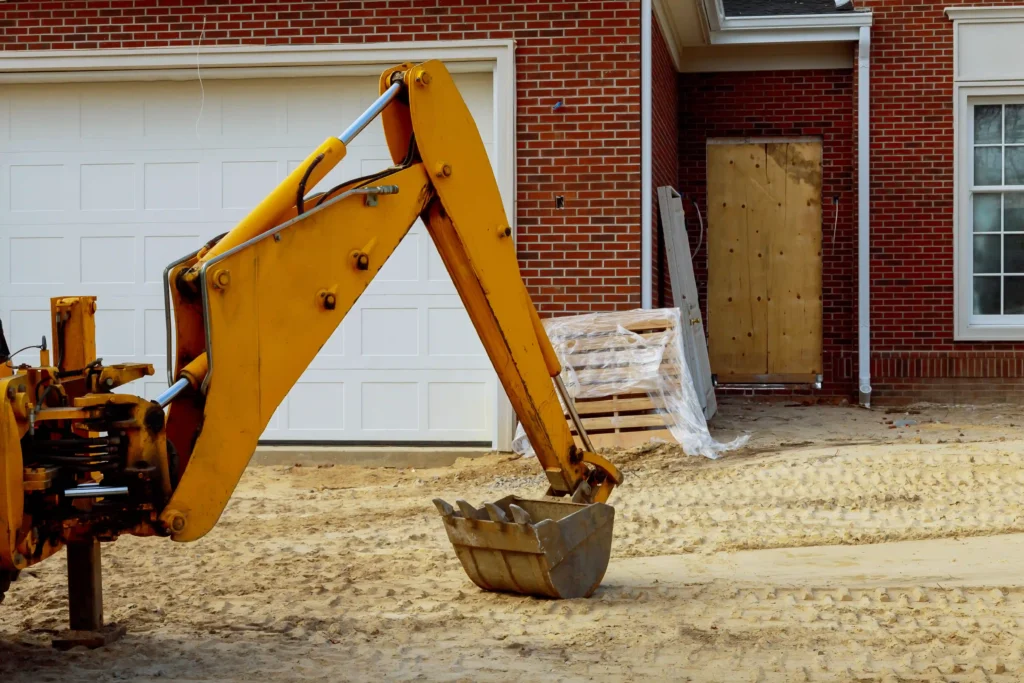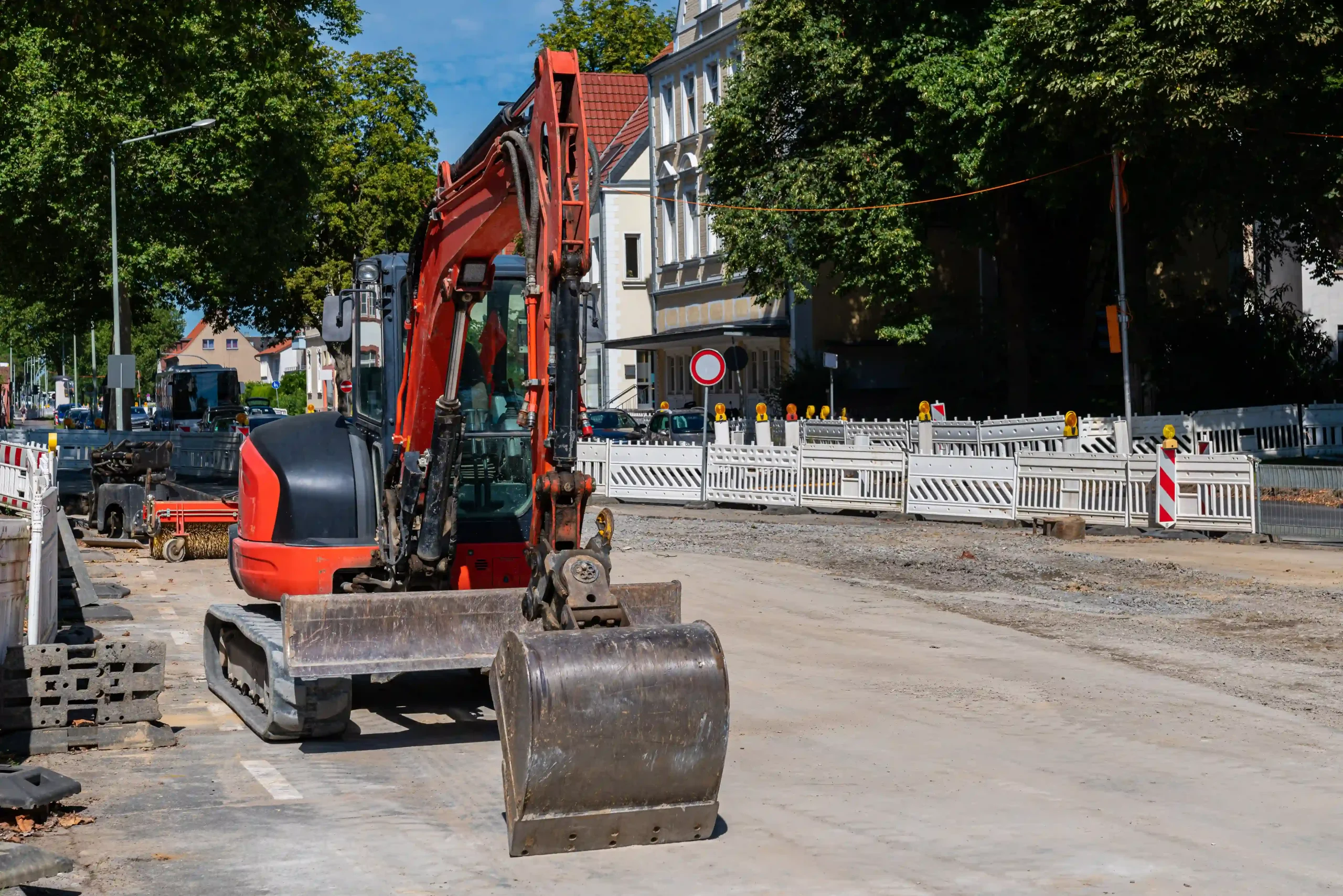When it comes to preparing land for construction or landscaping, proper drainage planning is just as important as the excavation itself. In Orange, NSW, where rainfall can vary dramatically throughout the year, overlooking drainage during excavation can lead to costly issues like soil erosion, water pooling, and foundation damage. Excavation services in Orange play a critical role in shaping the landscape to manage water flow effectively—both during and after construction. In this guide, we’ll walk through the key steps to avoid drainage problems, from pre-excavation planning to post-project maintenance, helping you make informed decisions that protect your property long-term.
Drainage issues often stem from poor site assessment, incorrect grading, or failure to install proper water diversion systems. Whether you’re building a home, installing a driveway, or landscaping a yard in Orange, understanding how water behaves on your property is essential. The right excavation approach helps control runoff, protect structures, and maintain long-term site stability.
Excavation Services in Orange: Prioritizing Proper Drainage
When you engage excavation services in Orange, the first step isn’t just pulling out dirt – it’s understanding your site’s water problem. Even before an excavator’s treads touch the soil, the savvy contractor (or DIYer!) will:
- Map the land and utilities. According to SafeWork NSW, “Before you start any excavation you must first check with Before You Dig Australia so that you know the location of essential utilities and services”. This ensures you don’t hit gas lines and gives clues about buried pipes or storm drains.
- Survey slopes and soil. Clay and loam behave differently in wet weather. Orange has areas of clay-rich soil with poor drainage. Knowing soil type tells you how fast water soaks in and whether groundwater might seep into a trench. A simple soil test and topographic survey help you plan where water naturally flows.
- Account for rain. Don’t forget that Orange can have heavy rain events. Historical patterns (and local plumbers’ anecdotes) remind us that even moderate storms can overwhelm a bad plan. Planning means not digging on a bad-weather forecast and installing temporary channels or sandbags if rain is due during work.
Think of this like prepping for a backyard flood drill: mark high and low spots, note where puddles form after rain, and find existing culverts or drains. By taking these steps (drawing on local knowledge and professionals), you set yourself up for success. You might even avoid future headaches: as Orb Excavations points out, ignoring how water flows “can lead to flooding and serious risks to your property”.
Spotting and Preventing Drainage Problems Early
Before you break ground, know the red flags of bad drainage. If you’ve ever noticed puddles near the house, a soggy lawn, or basement seepage after rain, those are warning signs. Orb Excavations lists common trouble signals such as persistent pools of water, basement flooding, persistently wet lawns, overflowing gutters, or cracks in walls and foundations. In short, any unplanned water is a sign that your current yard grade or drainage system isn’t cutting it.
Likewise, understanding common causes helps prevent issues:
- Poor grading. If your yard slopes toward the house instead of away, rainwater will channel against your foundation. (As one expert notes, “when your yard slopes toward the house, water can accumulate near the foundation”.) Before excavation, plan to regrade so that the soil gently falls away from any structures.
- Clogged gutters and drains. Debris in gutters or drainpipes can send water cascading where it shouldn’t. During excavation, clear out old pipes and install guards on gutters.
- Missing drainage systems. Without features like French drains or catch basins, water has “no clear path to flow away”. That means rain pools and seeps into lower areas. Planning in these systems early (we’ll cover these more below) is key.
- Heavy rainfall. Orange can experience intense storms, and “inadequate drainage systems” may be overwhelmed in a downpour. Designing for worst-case runoff (e.g. above-average rain) is better than dodging ice cubes under a leaky roof.
Keeping these points in mind, you and your contractor can avoid the classic trap of “digging a big hole and forgetting where the water goes.” Instead, plot out water flow now so it doesn’t bulldoze your project later.

Planning Your Excavation to Handle Water
A great excavation project is like a well-choreographed dance between earth and water – we want the earth to move while water politely exits stage left. Here are the key planning steps:
- Conduct a site assessment: Look at the entire property. Take note of low spots that collect water, existing drainage swales, and how adjacent land might shed water onto your site. JBS Walls recommends geotechnical surveys to “assess soil type, strength, and permeability”. In practice, that means drilling test holes or surveying slopes to tailor your plan.
- Design for the grade: Decide on the final land slope before digging. A common rule is a 1% slope (at least 1 cm drop over 1 m) away from any structure. That usually means higher ground under the slab or house and a gentle downward slope to the site edge or drainage point. You can mark proposed elevations with stakes.
- Plan drainage features: Decide if you need French drains, swales, or channels (or all of the above). For example, if your yard has a low corner that stays wet, a trench with a perforated pipe (a French drain) might be ideal. If you’re cutting into a slope, consider retaining drains or sheet piling to keep groundwater out. Always plan an outlet (like the street gutter, a soakaway pit, or nearby storm drain) for these systems.
- Factor in permits and utilities: Excavate only once council permits are in place (if required in Orange) and utilities are marked. For detailed regulations on excavation, retaining walls, and drainage, the NSW Planning Portal’s Earthworks and Structural Supports page is a great reference. As SafeWork NSW reminds us, “Don’t dig blind!”.
By the end of planning, you should have a sketch or map showing where pipes, drains, and slopes will go. This not only avoids surprises, but ensures everyone – you, the builder, and your neighbors – stays (relatively) dry during work.
Smart Drainage Solutions During Excavation
Once digging starts, put your plan into action. This phase is where proper drainage devices really pay off. Here are clever strategies and common solutions:
- French drains and perforated pipes. A French drain is basically a gravel-filled trench containing a perforated pipe. It collects subsurface water and channels it away. Excavators dig the trench, line it with filter fabric, add gravel and a slotted pipe, then cover it over. Orb Excavations notes French drains “redirect water away from your home using a gravel-filled trench and perforated pipe”. These are great along building perimeters or wet areas.
- Grading and benching. Use the excavator to re-sculpt the land. For example, create a berm on the high side of a foundation or smooth a gentle swale away from structures. As one guide explains, “re-sloping your yard ensures water flows away from the foundation”. Even small adjustments can make a big difference – think of carving your yard like a bowl that pours out to the street, not into your footings.
- Sump pits and pumps. If you hit the water table or create a deep hole (for a basement or pool) you may need dewatering. Dig a small sump pit in the excavation, insert a pump, and hose the water out to a safe spot. “Sump pumps remove water from basements or crawl spaces, preventing flooding”. This is often a temporary measure during construction, but it illustrates the idea: give water a dedicated escape hatch.
- Stormwater pipes and outlets. For larger projects, the excavator can lay deep stormwater lines. These connect to outlets like street drains or detention basins. If your property is big and prone to flash runoff, consider excavating an on-site detention pond or connecting to council drains. As the Titanium Excavation blog suggests, on big sites “excavation allows for the installation of storm drains to capture runoff from heavy storms”. It may sound extreme for a backyard, but sometimes a big catchment pit or soakaway is the safest outlet.
- Temporary erosion controls. Before restoring the site, use silt fences, sandbags, and geotextile mats on any slopes or at trench edges. AMB Earthworks notes sandbags and ditches help redirect surface water during construction. This prevents the trench walls from washing out and protects neighbors (and council drains) from sediment. The idea is to catch or divert muddy water now, so it can’t cause erosion and blockages later.
To visualize these ideas, here’s a quick rundown of common drainage solutions:
| Drainage Solution | Function / Use-Case |
|---|---|
| French Drain | Gravel trench with a perforated pipe, covered by fabric. Redirects subsurface water away from foundations and wet spots. |
| Swale / Channel | Shallow, landscaped ditch. Guides surface water along a planned path (often toward a drain or garden). Great for gentle slopes and directing roof/downpipe runoff. |
| Sump Pump | Submersible pump in a pit. Pumps out accumulating water from excavations or basements (especially when digging below the water table). |
| Grading / Slope | Reshaping the land. Ensures all water flows away from buildings. Orb Excavations emphasizes proper slope as key for water to “flow away from the foundation”. |
| Retention Basin | Large excavated depression. Holds stormwater after heavy rains and releases it slowly. Useful on large lots with seasonal floods, as noted by excavation experts. |
(For example, an excavator might carve out a shallow pond that collects roof and driveway runoff, or install a drain leading to a grassed basin.)
By mixing and matching these solutions – chosen to suit your yard’s needs – you can channel almost all water out of harm’s way. Remember to direct outlets to safe locations (never onto a neighbor’s property!) and consider local regulations if connecting to street drains.
Avoiding Common Pitfalls
Even with the best plan, mistakes happen. Here are some pitfalls to dodge to make sure your drainage plan works—especially when using excavation services in Orange:
- Skipping compaction. After excavation or backfilling, un-compacted soil can settle and form depressions, creating new puddles. Always compact fill in layers, especially under driveways or slabs, so the ground stays level and flows as intended.
- Forgetting permits or council rules. In Orange, any new stormwater connection may require council approval. Check local regulations – it’s far cheaper and easier to get consent than to fix an illegal drain later. Reputable excavation services in Orange will usually help navigate this.
- Neglecting maintenance. It’s not enough to install drains; you must keep them clear. Leaves and soil will wash into trenches and pipes if unchecked. (Orb Excavations recommends cleaning gutters and inspection regularly.) After construction, maintain the new system: flush out the French drain if sediment builds up, keep the sump pump pump primed, and inspect any drainage lines each spring.
- Working in the rain without a plan. Heavy rain during excavation can cause trenches to collapse or pump out. If a downpour hits mid-project, have sandbags or tarps ready to temporarily cover open trenches. Keep a pump on standby in deep holes.
- Neglecting landscape restoration. Sometimes the final touch fixes drainage: plant grass or groundcover on slopes to slow runoff, or create garden beds that soak up water. Proper planting (trees and shrubs) after grading will stabilize soil and absorb moisture, as long as roots don’t harm the drainage pipe!
By thinking ahead of these issues, your excavation will remain straightforward – no emergency callouts drenched in mud. As the experts say, preventing a problem is far easier than fixing flood damage. In Orange, any new stormwater connection may require council approval. For clarity on how water must be directed legally on your property, refer to the Mid‑Western Regional Council ‘Stormwater’ page—which explains your obligations for redirecting runoff to kerb and gutter systems.
Post-Excavation Care and Maintenance
Congratulations – the dig is done and your hardscape or foundation is in place. But the work isn’t entirely over until you set up a routine of maintenance. The best excavation services in Orange don’t just leave the job site—they help set you up for long-term drainage success.
- Inspect after rain. Once the landscaping or lawn is in, watch your site during the next few storms. Water should flow freely along the channels and not pool where it shouldn’t. If you see any new puddles, you may need to tweak the grading or clear debris.
- Clear debris and sediment. Leaves, dirt, and mulch will naturally wash into trenches and drains. Make it a habit to sweep the yard and gutters a couple of times a year (fall and spring are good checkpoints). Orb Excavations advises cleaning downpipes and drains “at least twice a year” to keep systems working.
- Maintain mechanical systems. If you installed a sump pump or any valves, test them annually. Pour water into the pit to ensure the pump starts and flows out. Replace batteries in backup alarms if present. Even the most basic pump can fail if left alone for years.
- Watch for erosion. Inspect grassy or soil-covered swales and hillsides. If you notice erosion (rills or gullies forming), add erosion control matting or re-plant vegetation to hold the soil. This keeps the drainage path smooth and prevents problems downstream.
Think of it like car maintenance: a quick check-up after each season can save you from a “flat tire” (aka a flooded foundation). Over time, small fixes now prevent the need for big excavation jobs later.
Conclusion
Good drainage isn’t glamorous, but it’s essential. By planning ahead, using the right techniques, and staying on top of maintenance, you’ll avoid the nightmare of a waterlogged yard or flooded basement. Remember the key takeaways: survey your site, grade it away from buildings, install drains (like French drains or gutters) where needed, and protect your work with erosion controls. As local experts say, proper excavation and drainage go hand-in-hand – one without the other can turn your “dream build” into a muddy mess.
If you’re in Orange and ready to dig, do it smart: hire experienced excavation professionals who understand local soil and weather. Ask them about “how will water flow?”—if they mention site plans, pumps, and trenches before talking equipment, you’re on the right track.
Stay dry out there!
FAQs:
What are common signs of drainage problems after excavation?
Look for water pooling on the surface (even short-lived after rain), soggy lawn spots, damp basement corners, or mold/mildew odors. Gutters overflowing or cracks in lower walls also signal poor drainage. These hints mean you should address slopes, drains or gutters promptly to stop flooding.
How do French drains help prevent flooding?
A French drain is a gravel-filled trench with a perforated pipe that collects excess water underground and channels it away. By capturing subsurface water before it pools, it directs flow to a safe outlet. Proper installation during excavation (digging the trench deep enough, lining with fabric and gravel) ensures it works long-term.
Should I hire a professional for my excavation and drainage?
Yes – experienced contractors know local soil and council rules. They’ll plan slopes, choose the right drains or sump pumps, and use machinery safely. Professionals often offer inspections and warranties, giving peace of mind that water won’t surprise you later.

